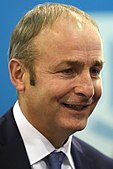Next Irish general election
|
|
||||||||||||||||||||||||||||||||||||||||||||||||||||||||||||||||||||||||||||||||||||||
|---|---|---|---|---|---|---|---|---|---|---|---|---|---|---|---|---|---|---|---|---|---|---|---|---|---|---|---|---|---|---|---|---|---|---|---|---|---|---|---|---|---|---|---|---|---|---|---|---|---|---|---|---|---|---|---|---|---|---|---|---|---|---|---|---|---|---|---|---|---|---|---|---|---|---|---|---|---|---|---|---|---|---|---|---|---|---|
|
||||||||||||||||||||||||||||||||||||||||||||||||||||||||||||||||||||||||||||||||||||||
|
|
||||||||||||||||||||||||||||||||||||||||||||||||||||||||||||||||||||||||||||||||||||||
|
157 of 158 seats in Dáil Éireann 80 seats needed for a majority |
||||||||||||||||||||||||||||||||||||||||||||||||||||||||||||||||||||||||||||||||||||||
| Opinion polls | ||||||||||||||||||||||||||||||||||||||||||||||||||||||||||||||||||||||||||||||||||||||
|
||||||||||||||||||||||||||||||||||||||||||||||||||||||||||||||||||||||||||||||||||||||
|
||||||||||||||||||||||||||||||||||||||||||||||||||||||||||||||||||||||||||||||||||||||
The next Irish general election will be held in Ireland on or before Monday, 12 April 2021. The election will be called following the dissolution of the 32nd Dáil by the President, at the request of the Taoiseach. At stake will be 157 of 158 seats in Dáil Éireann, the Ceann Comhairle being re-elected automatically unless he opts to retire from the Dáil.
The 158 members of the Dáil will be elected in 40 multi-member constituencies, each with between three and five seats, using the single transferable vote system in which voters rank candidates on their ballot papers. When the ballot papers are counted, an electoral quota is created by dividing the number of valid votes by the number of seats, plus one.
Any candidate receiving a number of votes exceeding the quota is elected. If fewer candidates reach the quota than the number of seats to be filled, the last-placed candidate is removed from the count and the second or subsequent preferences on those ballot papers are redistributed until a candidate is elected. If such a candidate now has more votes than the quota, their surplus is given to other candidates in order of ranking on the ballot papers.
This is repeated until sufficient candidates have passed the quota to fill the available seats or where a seat remains to be filled in a constituency and no candidate is capable of achieving a quota as there is nobody left to eliminate for a distribution then the highest place candidate without a quota is deemed elected at that point.
A Constituency Commission convened in July 2016 as per the provisions of the Electoral Act 1997, and under the Chairpersonship of Judge Robert Haughton to redraw constituency boundaries after publication of initial population data from Census 2016. Until such time as this commission reports in mid 2017 the number of seats will continue to be 158 in 40 constituencies but thereafter the number of seats to be filled in any future election will increase in line with population increases since 2011 and will be increased to c.163 or 164 seats given the population increase of 170,000 since the last commission report in 2012.
The commission has some discretion but is constitutionally bound to allow no more than a 30,000 population ratio per elected member and is by convention constrained not to breach 'traditional' county boundaries save in rare cases, even if this leads to slight over-representation.
...
Wikipedia






